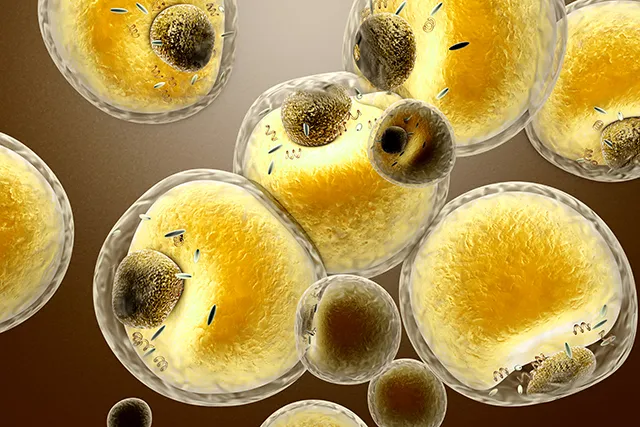When mRNA vaccines were first rolled out, the biomedical community was elated at the prospect of leveraging lipid nanoparticles to circumvent the body’s immune defenses and deliver mRNA fully intact into the cells. However, as researchers look closer into the science behind genetic therapies, a surprising discovery has emerged: the lipid nanoparticles used in mRNA formulations may not be as benign as initially thought. These contaminants pose as "self assembling lipids for the purpose of transfection."
Concerns about lipid nanoparticles: Expert Analysis by Dr. Anne Ulrich: Dr. Ulrich, a biochemistry professor, provided an analysis in the International Journal of Vaccine Theory, Practice, and Research (IJVTPR), explaining the structures observed in mRNA vaccines.
Self-assembling lipids: The unusual structures observed under the microscope are a result of lipids naturally self-assembling, a biophysical phenomenon, and are not "nano-robots" or contaminants.
Risks and concerns of persisting nanoparticles: The persistence of these lipid nanoparticles in human tissue raises questions about their long-term impact on human health.
Health effects: The lipid nanoparticles may induce inflammation, autoimmune responses, and allergic reactions, especially with high doses or improper storage.
Dr. Ulrich sheds light on the complex microscopic structures found in mRNA vaccines
Dr. Anne Ulrich, a biochemistry professor at the Karlsruhe Institute of Technology with over two decades of experience in lipid bi-layers and bio membranes, has provided an expert analysis in the IJVTPR. Her work has shed light on the complex microscopic structures found in mRNA vaccines, which were initially misinterpreted by some as "nano-robots" or contaminants.
Dr. Ulrich’s research has proven otherwise. According to her, the unusual structures often observed under the microscope are simply the result of self-assembling lipids, a phenomenon governed by simple biophysical principles. What might appear to be alarming "nano-robots" or toxins is, in fact, the predictable behavior of lipids in aqueous environments, forming a wide array of shapes and structures driven by their inherent properties.
The risks and concerns of persisting nano-particles
However, Dr. Ulrich's findings have also opened up a Pandora's box of concerns. The persistence of these lipid nanoparticles in human tissue raises a host of questions about their long-term impact on human health. This revelation comes as a shock to those who believed the mRNA vaccines would be a fleeting technical achievement, disappearing from the body after their intended function was fulfilled.
In an interview with Doctors for Covid Ethics, Dr. Ulrich discussed her assessment of the risks associated with the mRNA vaccines, which she refers to as modRNA. While she dismisses the notion of "nanobots," her analysis does conclude that the lipid nanoparticles, while not inherently dangerous, may cause inflammation, autoimmune responses, and allergic reactions—especially if the dose is high enough or if they have been improperly stored.
Moreover, recent research published in the IJVTPR has detected an alarming 62 different elements in vaccine samples from around the world. While Dr. Ulrich argues that many substances commonly used in treatments would likely show similar contamination under comparable methods, the persistent presence of these particles does not bode well for the vaccinated.
Unveiling the peculiar structures
In a correlating study published in the IJVTPR, Lee and Broudy (2024) reported peculiar structures in mRNA vaccines that have raised concerns among the public. The authors described strange objects, including "worm-like entities," "disks," and "spirals," observed through optical microscopy. Contrary to conspiracy theories suggesting the presence of "nanobots" or other foreign materials, the study concludes that these formations are natural products of lipid self-assembly, a known phenomenon in biophysics.
The lipid nanoparticles, which make up the bulk of vaccine ingredients, can form these unusual shapes, especially when stored improperly or for long periods. However, the study also notes that these lipid nanoparticles can induce inflammation and have high immunogenic and allergenic potential, which raises concerns about their extensive use in humans. This research provides reassurance against unfounded fears while highlighting valid concerns about the vaccine's ingredients.
По материалам: http://www.planet-today.com/2024/12/researchers-describe-persistent-covid.html